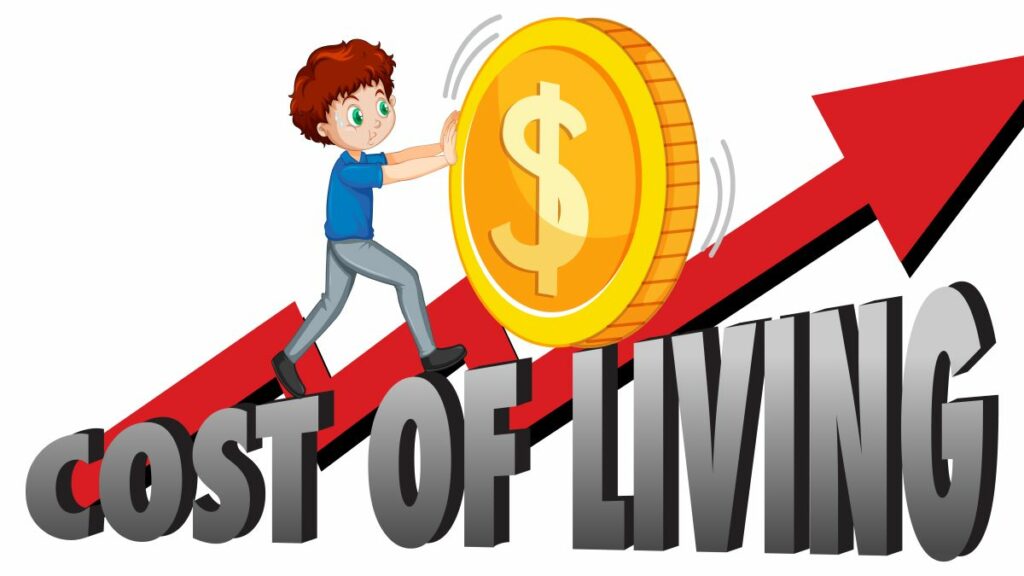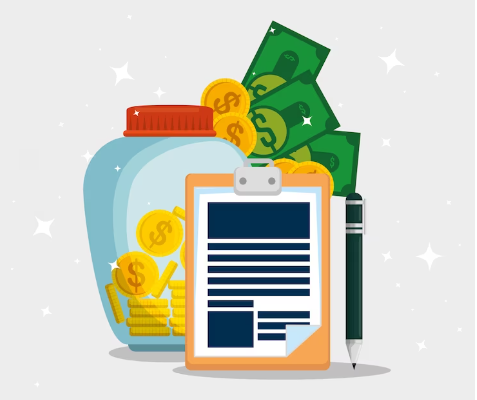Recession warnings are becoming more frequent on Wall Street. Still, the slump has already arrived for many of the world’s individuals and businesses.
- Goldman Sachs Group Inc. experts estimate the chance of such a recession in the United States in the coming year is 30%.
- Bloomberg Economics predicts a 38% possibility in the same time range, with risks increasing beyond that point.
- However, for many, it already feels like it has here.
- According to a CivicScience poll conducted last month, more than one-third of Americans believe the economy is now in a recession.
A recession is a business cycle downturn that occurs with a broad fall in economic activity. A financial crisis, an external trade shock, an unfavourable supply shock, the breaking of an economic bubble, or a large-scale manufactured or natural calamity may all induce this. Recessions often develop when there is widespread unemployment.
Small company owners, consumers, and others’ concerns are reflected in the so-called Misery Indexes, which combine unemployment and inflation rates. According to Bloomberg Economics, the gauge for the United States is now 12.2 per cent, comparable to levels seen during the pandemic outbreak and in the aftermath of the 2008 financial crisis.
Table of Content:
1. What Do the Statistics Say?

According to a Bloomberg survey of analysts conducted last week, the median chance of a recession over the next 12 months is 47.5 per cent, up from 30 per cent in June. That implies that more layoffs, fewer employees, and higher interest rates will likely happen soon. According to some recent economic estimates, if inflation continues to rise, so increases the likelihood of a recession.
Inflation, which shows little signs of reducing, is a significant reason a recession is inevitable. The consumer price index (CPI) data released this week indicated that year-over-year inflation reached 9.1 per cent, the highest rate since 1981.
Banks such as Citigroup, Deloitte, and PNC Financial Services originally forecasted a slowdown in 2023. Still, new estimates indicate that a recession may begin in 2022 or sooner in 2023 than previously predicted.
As a result, “recession will be difficult to avert” for many nations, according to World Bank President David Malpass in June. There hasn’t been a worldwide economic catastrophe of this size since the 2007-2009 financial crisis, which was the worst depression since the Great Depression of 1929.
The COVID-19 outbreak and the ongoing conflict in Ukraine have caused a massive economic collapse in 2022. Prices for certain essential commodities have reached all-time highs, while economic growth has slowed and inflation has risen.
Many nations still define a recession as “two consecutive quarters of falling growth,” as US economist Julius Shiskin in 1974.
When determining whether or not America is in a recession, the National Bureau of Economic Research (NBER) considers several criteria. The organisation defines the event as “a considerable fall in economic activity across the economy that lasts more than a few months and is generally observable in output, employment, real income, and other indicators.” However, the United States has since chosen a broader definition.
2. What are the Signs of a Recession?

According to the International Monetary Fund, the US economy will slow in 2022 and 2023. Still, it will “narrowly avoid a recession” as the Federal Reserve pursues its rate-tightening plan to combat inflation.
Aside from a lengthy decrease in GDP, the unemployment rate is one of the most visible indicators of a recession. When this starts to rise, it can cause a chain reaction of economic effects as demand for products and services declines. The Bureau of Labor Statistics reported that unemployment in the United States reached 9.5 per cent during the last global recession.
The IMF expects the US economy to decelerate based on the policy path set at the June Federal Open Market Committee meeting and a projected decrease in the fiscal deficit.
She said the fund had “recently ended a beneficial series of meetings” with Treasury Secretary Janet Yellen and Fed Chair Jerome Powell.
Georgieva stated during the press conference that the IMF sees the need for a policy to prevent additional upward pressure on oil prices, which she addressed with Yellen this week.
Although pricing pressures in the United States are broad-based and extend far beyond rises in energy and food costs, Georgieva stated that Yellen and Powell “left no question” about their commitment to bringing inflation back down.

The IMF suggested that the Biden administration pull down tariffs imposed on steel, aluminium, and various Chinese commodities during the last five years to alleviate inflationary pressures. Katherine Tai, President Joe Biden’s trade adviser, recently stated that tariffs on more than $300 billion yearly US imports of Chinese products give substantial power and benefit negotiations.
Declining consumer spending is another indicator of an impending recession. According to Wells Fargo, consumer spending will “outright drop” by September as more consumers dive into their savings to offset the rising expenses of goods and services.
Inflationary pressures necessitate interest rate increases, which the Federal Reserve is almost expected to do when it meets at the end of the month.
The main issue is whether it will be a 0.75 per cent increase, as most estimates predict, or a 1 per cent increase, as Atlanta Fed President Raphael Bostic thinks is “in play.”
Although employment is now vital in many major economies, consumer confidence, another essential indicator, is low. It is due to the cost of living problem, which causes less spending, causing the economy to contract and tax revenues to fall.
Rate increases can reduce inflation by making borrowing more expensive for companies and individuals. However, this reduces demand for products and services, which can stifle economic growth.
During recessions, stock markets are likewise likely to struggle. As consumer confidence and expenditure fall, businesses may be obliged to lay off people, resulting in poor investment performance and market panic.
Conclusion

Donisanu calls forecasting a recession “a fool’s game.” A recession implies that the economy is not expanding, and the measure of economic growth is known as the gross domestic product (GDP). Attention to these clues is beneficial, but there is seldom a definite signal. It means it’s essential to keep an eye on these quarterly statistics since any signs of a slowing economy are sure to show up here.
However, Donisanu believes comparing GDP to analysts’ longer-run estimates is equally worthwhile. t can help you decide whether overall swings in GDP are a reason for concern, as well as what the “output gap” is.
An output gap is a difference between the actual production of the US economy and what economists believe it should be, which can be positive or negative.
A recession implies that the economy is not expanding, and economic growth is known as the gross domestic product (GDP) measure.
It means it’s essential to keep an eye on these quarterly statistics since any signals of a slowing economy are sure to show up here.
However, Donisanu believes comparing GDP to analysts’ longer-run estimates is equally worthwhile. It can help you decide whether overall swings in GDP are a reason for concern, as well as what the “output gap” is.
An output gap is a difference between the actual production of the US economy and what economists believe it should be, which can be positive or negative.
free budgeting app best free budgeting app budgeting app best free budgeting apps budgeting app free money management app manage money app family budget app personal finance tracker track personal finances budgeting app for couples




 Our users have reported an average of $5K+ positive impact on their personal finances
Our users have reported an average of $5K+ positive impact on their personal finances
